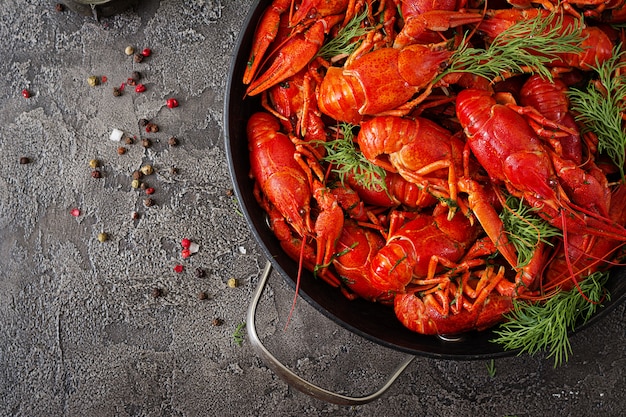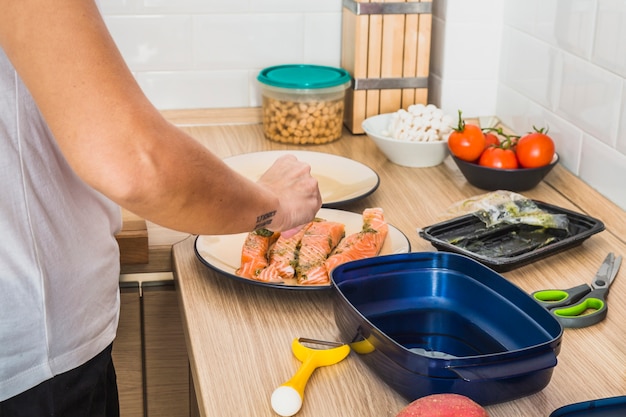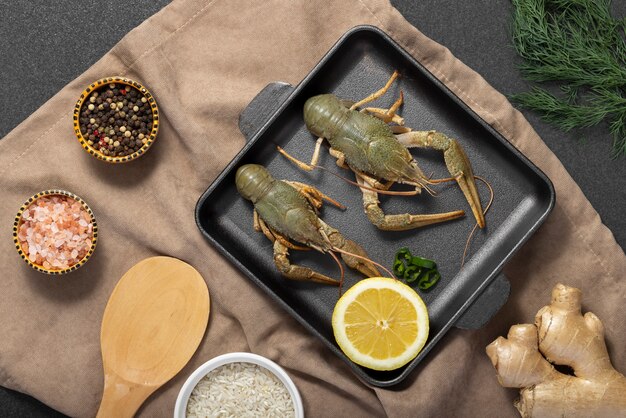Ah, blue crabs! The mere mention of these crustacean delights evokes images of a sun-drenched coastline, a picnic table laden with seafood, and the satisfying crunch of cracking open a shell to reveal succulent, sweet meat. I've always loved the thrill of a blue crab feast, and over the years, I've learned a thing or two about preparing them. So, if you're ready to tackle this culinary adventure, get your apron ready, because we're diving headfirst into the world of blue crab cooking! This guide will cover everything from choosing the freshest crabs to mastering the art of steaming, grilling, and seasoning, leaving you with a feast fit for a seafood king or queen!
(Part 1) Choosing Your Crabs: The Foundation of a Delicious Feast

The first step to a truly memorable blue crab experience is selecting the right crabs. Think of it as setting the stage for a fantastic performance—you want the best actors for the role! Here's what to keep in mind when picking your crustacean stars:
Freshness First: A Quick Guide to Identifying Prime Crabs
When you're at the market, don't be afraid to get a little hands-on. Give those crabs a good look-over! A fresh crab should be lively, with bright, alert eyes. The shell should be firm and solid, not soft or squishy. If you see a sluggish crab or one with a shell that gives a bit when you press on it, it's probably not as fresh and won't taste as good. You can also check the gills – they should be a bright red colour, not grey or brown.
Size Matters: Finding the Perfect Size for Your Cooking Method
There's no one-size-fits-all rule when it comes to blue crab size. It truly depends on your cooking method and personal preference. For steaming, I usually gravitate towards medium-sized crabs, which are around 5-7 inches across the shell. This size cooks evenly and provides a good balance of meat to shell. But if you're planning on grilling or baking, bigger is often better. Larger crabs offer more meat and hold up well to the heat.
Male vs. Female: A Matter of Taste and Texture
Now, here's where things get a little interesting. Male crabs are known for their larger claws, which tend to have firmer, more abundant meat. Think of them as the protein powerhouses! Female crabs, on the other hand, have a softer texture and a more delicate flavor. They also boast the delicious roe, which is a creamy, buttery treasure trove of flavor. If you're craving a lighter, more delicate taste, a female crab is a great choice. You can tell the difference between the sexes by looking at the belly. Male crabs have a triangular-shaped belly, while females have a rounder one.
Seasonality: Catching the Crabs at Their Peak
Blue crabs are a seasonal treat, and the summer months are when they truly shine. During this peak season, they're at their plumpest, most flavorful, and readily available. If you can, try to plan your crab feast during these months for the best quality and taste. Of course, you can find crabs year-round, but they might not be as robust in flavor as those harvested in peak season.
(Part 2) Preparing Your Crabs: From Market to Kitchen

You've found your crabs! Now it's time to get them ready for cooking. This part of the process might get a little messy, but don't worry, I'll guide you through each step. Think of it as a culinary adventure—you'll be a seasoned crab prep pro in no time!
Cleaning Up: Removing the Apron and Mouthparts
First things first, give your crabs a good rinse under cold water to wash off any lingering sand or debris. Now, for the apron. This flap on the underside of the crab is a bit of a culinary nuisance, so it's best to remove it. A pair of kitchen shears comes in handy for this task. Just snip the apron off at the base.
Next up, the mouthparts. These are located on the underside of the crab, and they're not exactly known for their deliciousness. I usually use the tip of a kitchen knife to gently pry them off. Don't worry if you leave a tiny bit behind; you can always remove it later.
Gutting Your Crabs: A Quick and Easy Technique
Alright, now for the more involved part – gutting the crabs. This might sound a bit daunting, but trust me, it's easier than it seems! Turn the crab over and look for a small, triangular opening on the back of the shell. This is the opening to the crab's gut. Use a sharp knife to make a small cut in the opening, and then gently remove the gut. Be careful not to damage the crab's meat. You can discard the gut or save it to make a delicious stock.
Ready to Cook: Time for the Culinary Magic to Begin!
That's it! Your crabs are now prepped and ready to be cooked. If you're steaming them, you can cook them immediately. However, if you're planning on grilling or baking, chilling them in the refrigerator for about 30 minutes before cooking is a good idea. This helps keep the meat firm and prevents it from becoming too soft during the cooking process.
(Part 3) Steaming Your Crabs: A Classic Method for Delicate Flavor

Steaming is the most traditional and arguably the best way to cook blue crabs. It produces a delicate flavor and ensures the meat stays moist and tender. Here's how to achieve steaming perfection:
Setting up Your Steamer: Essential Equipment and Flavors
You can use a dedicated crab steamer, which is designed specifically for cooking crabs, or a large pot with a steamer basket. If you're using a pot, make sure it's big enough to comfortably hold your crabs without overcrowding. Fill the bottom of the pot with about an inch of water. For an added flavor boost, you can add seasonings like lemon slices, bay leaves, or a generous sprinkle of old bay seasoning. The aroma of the steaming water will infuse the crabs with an irresistible fragrance. Once the water reaches a simmer, add your crabs to the steamer basket.
Steaming Time: Cooking Your Crabs to Perfection
The steaming time will depend on the size of your crabs. As a general rule, steam medium-sized crabs for about 15-20 minutes. If you're steaming larger crabs, you might need to increase the cooking time slightly. It's always better to err on the side of caution and undercook them a bit, as you can always steam them for a little longer if needed. You'll know they're done when the shell has turned a bright red colour and the meat feels firm and cooked through.
Cooling Down: Letting the Crabs Rest and Set
When the crabs are done, remove them from the steamer and place them on a serving platter. Let them cool down for a few minutes before serving. This allows the meat to set a bit, making it easier to pick and enjoy.
(Part 4) Alternative Cooking Methods: Expanding Your Culinary Horizons
While steaming reigns supreme, don't be afraid to explore other cooking methods for your blue crabs. These techniques offer different flavors and textures, adding variety to your culinary repertoire.
Grilling: A Smoky and Charred Delight
Grilling gives your crabs a delightful smoky flavor and adds a touch of char. Make sure your grill is nice and hot, and then you're ready to go! You can grill your crabs whole, or you can cut them in half for easier grilling and serving. If you're grilling whole crabs, brush them with butter or oil to prevent sticking. Grill for about 10-15 minutes, or until the shell is cooked through.
Baking: A Hands-Off Method for a Delicious Feast
For a more hands-off approach, try baking your crabs. Preheat your oven to 400°F (200°C) and place your crabs in a baking dish. Pour some melted butter over them, along with any other seasonings you like. Bake for about 20 minutes, or until the shell is cooked through.
Boiling: A Quick and Easy Option
Boiling is a quick and easy way to cook crabs, but it can sometimes result in slightly tougher meat. Fill a large pot with water and bring it to a boil. Add your crabs to the pot and cook for about 10 minutes, or until the shell is cooked through.
(Part 5) Seasoning Your Crabs: Unlocking a Symphony of Flavors
Now, let's talk about the fun part—seasoning! A little bit of flavor goes a long way in enhancing the natural sweetness of the crab meat. Here are some of my favorite ways to season blue crabs:
Old Bay Seasoning: A Classic for a Reason
Old Bay seasoning is a quintessential crab seasoning, and for good reason! This iconic blend of herbs and spices adds a delicious salty, savory flavour to your crabs. You can use it to season the steaming water, sprinkle it on the crabs before cooking, or serve it alongside your crabs as a dipping sauce. The possibilities are endless, and each method delivers a slightly different flavor experience.
Lemon and Garlic: A Bright and Refreshing Duo
A simple combination of lemon and garlic adds a bright and fresh flavor that complements the crab's natural sweetness. Slice some lemons and add them to the steaming water, or rub a few cloves of garlic on the crabs before cooking. The lemon's acidity cuts through the richness, while the garlic provides a subtle, savory punch.
Butter and Herbs: A Classic comfort food Flavor
You can't go wrong with a good dose of butter and herbs! Melt some butter and add herbs like thyme, rosemary, or parsley. Pour the melted butter over the crabs before cooking, or serve it as a dipping sauce. This combination is classic for a reason – it's rich, savory, and a perfect complement to the crab's delicate flavor.
Spicy Seasonings: A Touch of Heat for the Adventurous Eater
For those who enjoy a little heat, you can add spicy seasonings to your crabs. Try adding chili flakes, cayenne pepper, or a splash of hot sauce to the steaming water. You can also use a spicy Cajun seasoning for a robust, flavor-packed experience. Just be mindful of your heat tolerance and adjust the amount of spice accordingly!
(Part 6) Cracking Open Your Crabs: A Guide to Enjoying the Fruits of Your Labor
You've done the prep, you've cooked your crabs to perfection, and now comes the moment of truth—cracking those shells open! Here's what you need to know to enjoy a satisfying and delicious crab feast:
The Tools: Essential Equipment for Cracking and Picking
You'll need a few essential tools to help you get to the delicious meat inside. A crab cracker is a must-have for cracking open the hard shell. It might seem intimidating at first, but it's actually quite simple to use. Just apply a bit of pressure to the shell, and it will crack right open. You'll also need a crab fork, which is designed specifically for picking out the meat from the shell.
The Technique: Mastering the Art of Cracking and Picking
Start by cracking the legs. Use the crab cracker to break the shell in half, and then use the crab fork to pick out the meat. The claw meat is the most prized part, so make sure you don't miss out on that! You can also use the crab fork to pick out the meat from the body. Just follow the natural contours of the shell and use a gentle, twisting motion to loosen the meat.
Enjoy! Savor the Flavor and the Moment
Once you've cracked open your crabs, it's time to enjoy the fruits of your labor! You can eat the meat straight from the shell, or you can pick it out and transfer it to a plate. Either way, be sure to savor the flavor and the satisfaction of a perfectly cooked blue crab. Don't forget to appreciate the company, the conversation, and the shared joy of a delicious meal.
(Part 7) Leftover Crabs: Storage and Recipe Ideas
Got some leftover crabs? Don't fret! You can easily store them for later and use them in all sorts of delicious recipes.
Storing Your Crabs: Keeping the Flavor Fresh
You can refrigerate cooked crabs for up to 3 days. Place them in an airtight container or wrap them tightly in plastic wrap. This helps prevent them from drying out and preserves the flavor.
Recipe Ideas: Transforming Leftovers into Culinary Delights
Here are a few ideas for using leftover crab meat, transforming it from a simple leftover into a star ingredient in new dishes:
- Crab Cakes: These are a classic way to use leftover crab meat. Just combine the crab meat with some breadcrumbs, mayonnaise, and seasonings, then shape into patties and pan-fry or bake. These crispy, flavorful crab cakes are a perfect appetizer or main course.
- Crab Salad: This is a light and refreshing dish that's perfect for lunch or a light dinner. Simply combine the crab meat with mayonnaise, celery, onion, and seasonings. You can serve it on a bed of lettuce, in a sandwich, or even as a topping for crackers.
- Crab Soup: For a warm and comforting meal, try making a crab soup. Sauté some onions, celery, and carrots, then add the crab meat, broth, and seasonings. Simmer until the soup is thickened and the flavors meld together.
- Pasta with Crab: Add some crab meat to your favorite pasta dish for a boost of flavor. Combine it with a creamy sauce, like alfredo sauce, or use it in a tomato-based sauce. The crab meat adds a delightful seafood element to the pasta, creating a satisfying and flavorful dish.
(Part 8) FAQs: Common Questions About Cooking Blue Crabs
You've got questions, I've got answers. Here are some of the most frequently asked questions about cooking blue crabs, providing you with the information you need to confidently tackle your next crab feast.
| Question | Answer |
|---|---|
| How can I tell if a crab is cooked? | The shell will turn a bright red colour, and the meat will be firm and cooked through. If the shell is still a dull colour and the meat feels soft and spongy, it needs more cooking time. |
| How do I know if a crab is still alive? | You can check by tapping the crab on the shell. If it moves, it's still alive. If you're unsure, you can ask the fishmonger to check for you. |
| How do I remove the crab's intestines? | Look for a small, triangular opening on the back of the shell. This is the opening to the crab's gut. Use a sharp knife to make a small cut in the opening, and then gently remove the gut. Be careful not to damage the crab's meat. You can discard the gut or save it to make a delicious stock. |
| How long can I store cooked crabs in the refrigerator? | You can refrigerate cooked crabs for up to 3 days. Place them in an airtight container or wrap them tightly in plastic wrap. This helps prevent them from drying out and preserves the flavor. |
| What is the best way to season blue crabs? | The best way to season blue crabs is really a matter of personal preference. Some popular options include Old Bay seasoning, lemon and garlic, butter and herbs, and spicy seasonings. Experiment with different flavors and find what you enjoy most! |
So there you have it! You're now equipped with the knowledge and confidence to conquer the world of blue crab cooking. Whether you're a seasoned crab connoisseur or a newbie just starting out, I hope this guide has provided you with valuable tips and tricks to help you create a delicious and unforgettable crab feast. Get your apron ready, gather your loved ones, and embark on a culinary adventure that will leave you craving more! Happy cooking!
Everyone is watching

Corn on the Cob: The Ultimate Guide to Perfectly Cooked Ears
Healthy MealsAh, corn on the cob. Just the name evokes images of sunny days, barbecues, and that sweet, juicy flavour that ...

Perfect Pork Roast Oven Cooking Time: A Guide to Delicious Results
Healthy MealsThere's something truly satisfying about a perfectly roasted pork. The aroma alone is enough to make your mout...

Ham Cooking Time: How Long to Bake, Smoke, or Boil a Delicious Ham
Healthy MealsAh, ham. It's a classic, isn't it? A real crowd-pleaser, especially around holidays. And when done right, it'...

Scallops: The Ultimate Guide to Perfect Cooking
Healthy MealsAh, scallops. Those delicate, sweet, and utterly delicious morsels of the sea. They hold a special place in my...

Spaghetti Squash: The Ultimate Guide to Cooking and Serving
Healthy MealsRemember that time you saw spaghetti squash at the supermarket, looking all bumpy and strange, and thought, "W...
